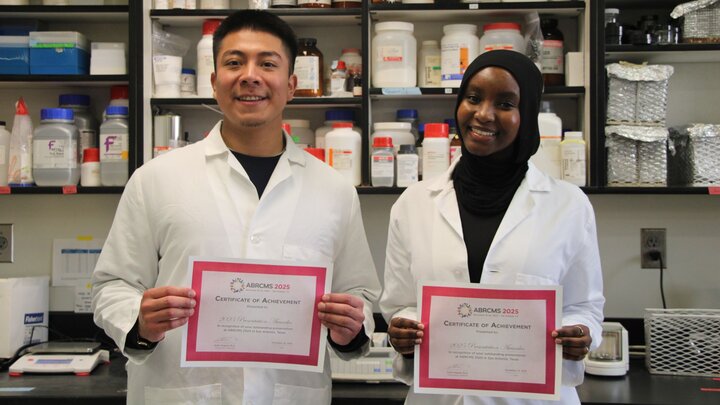Nature published a May 21 feature on Kevin Liévano-Romero, a fourth-year doctoral student in parasitology at the University of Nebraska–Lincoln (UNL).
A Colombia native, Liévano-Romero studies bat parasites and the viruses that infect them — specifically how the viruses affect their hosts’ fitness and susceptibility to infections. After graduating from the National University of Colombia’s veterinary medicine program in 2018, he worked as a veterinarian in Bogotá for three years, periodically helping with biodiversity field surveys and frequently contracting parasitic infections through contact with animals — “all kinds of worms … fleas, lice, ticks … blood parasites because of the tick bites or mosquitoes.”
Over-the-counter medications helped him recover quickly, Nature reported, but he often returned to the concoctions that his family made him as a child when he caught intestinal worms — “smoothies” made of the native paico herb, castor oil and garlic. He would also sleep with eucalyptus leaves under his mattress and spray himself with a liquid mixture of alcohol and tobacco to ward off parasites in the field, the journal reported.

Liévano-Romero decided to pursue a doctoral program at Nebraska after participating in a week-long field course on parasites co-organized by Scott Gardner, curator of Nebraska’s Manter Laboratory of Parasitology, which included a graduate student from Colombia.
“I didn’t think twice, maybe because I was so excited to explore the new world ahead of me,” Liévano-Romero said. “Then I started thinking … ‘Where is Nebraska, exactly?”
Four years later, Nebraska “feels like home” for the doctoral student, who is also an avid runner, dancer, and Spanish translator in a health clinic.
Gardner says Liévano-Romero’s veterinary surgery background is an asset to the lab.
“I think that if you do things with your hands at really minute details, it helps your brain process things further when you’re doing science at higher levels,” Gardner said.
At Nebraska, Liévano-Romero isn’t just doing intricate dissections, Nature reported. He is also tracking and capturing host mammals and drawing accurate scientific illustrations of newly identified parasites. After graduation, he hopes to continue his research in the Manter Lab, although he hasn’t ruled out returning to Colombia.
Liévano-Romero is a graduate student studying in the School of Biological Sciences, part of the College of Arts and Sciences at UNL.




